How Often to Water Money Tree?

If you’ve recently added a money tree to your home or office, you’re not alone—it’s become one of the most popular houseplants across the U.S. Not only is it easy on the eyes with its braided trunk and glossy green leaves, but many believe it brings good luck and financial fortune. But like any houseplant, the plant has its own care needs, and one of the biggest questions people ask is: How often should you water a money tree?
Getting the watering schedule right is crucial. The money tree (Pachira aquatica) is native to tropical regions, but it doesn’t like soggy roots. Overwatering is actually one of the most common ways people accidentally harm this plant. On the flip side, underwatering can lead to dry, curling leaves and a stressed-out plant.
In this article, we’ll break down how often to water your plant depending on factors like the time of year, the climate where you live in the U.S., indoor vs. outdoor conditions, and more. Whether you’re in dry Arizona or humid Florida, we’ve got practical tips to help your plant thrive. Stick around, and you’ll have a healthier, happier plant in no time!
How to Check If Your Money Tree Needs Water?
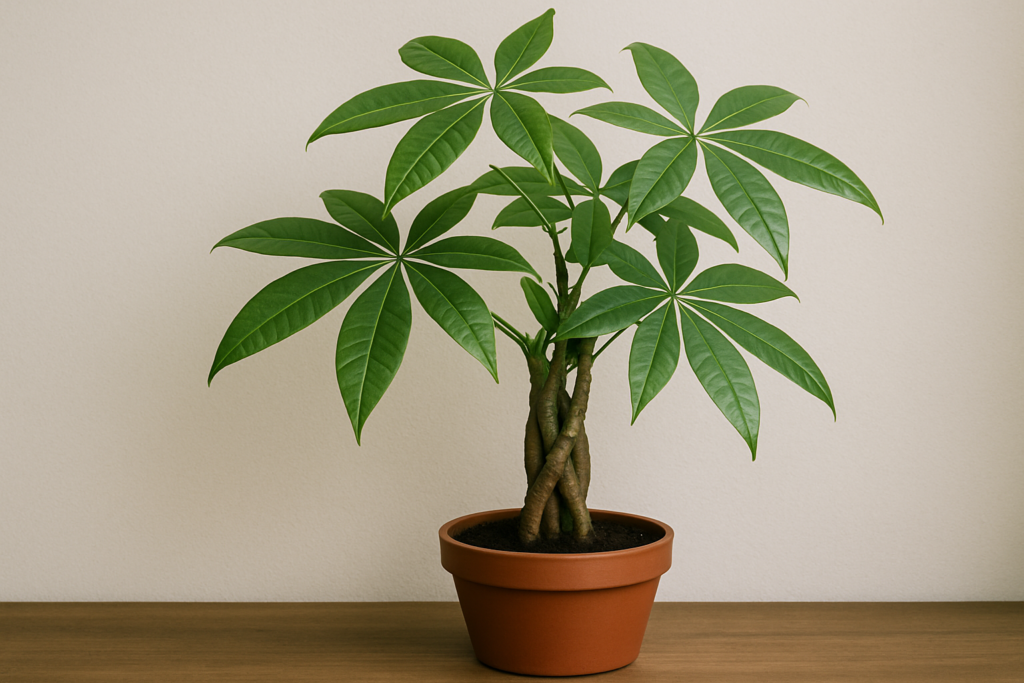
Before reaching for the watering can, it’s a good idea to check whether your money tree actually needs water. Overwatering is one of the most common issues U.S. plant owners face with this tropical beauty, and it can quickly lead to root rot if you’re not careful.
A quick and easy way to check is the finger test. Stick your finger about 1 to 2 inches into the soil—if it feels dry at that depth, it’s probably time to water. If it still feels slightly damp, give it a few more days.
Another tip: take a close look at the leaves. If your money tree’s leaves are drooping, curling, or turning yellow, it could be a sign of either underwatering or overwatering. That’s why checking the soil moisture is so important before guessing.
If you want to be more precise, consider using a moisture meter. They’re easy to find online or at most garden centers in the U.S., and they take the guesswork out of watering.
By learning to read the signs your money tree gives you, you’ll avoid common watering mistakes and help it stay happy and healthy for years to come.
Best Watering Schedule for a Money Tree
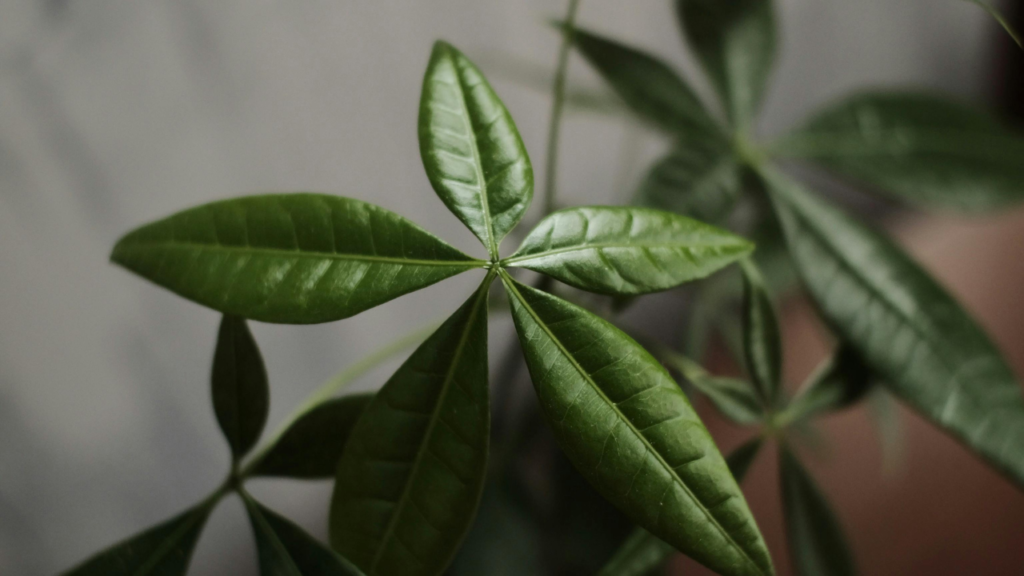
When it comes to caring for your money tree, having a consistent watering schedule can make all the difference. In most parts of the U.S., watering your money tree every 1 to 2 weeks is a good general rule—but this can vary depending on the season, your indoor environment, and the size of the pot.
During the warmer months, especially in spring and summer, your plant may dry out more quickly and need water about once a week. In the cooler fall and winter months, when the plant’s growth slows down and indoor air is less humid, watering every 10 to 14 days is usually enough.
Always check the soil before watering—if the top 1–2 inches feel dry, it’s time to water. And don’t forget about drainage! Your money tree pot should have drainage holes to prevent water from sitting at the bottom, which can lead to root rot.
If you’re living in a particularly dry climate like parts of the Southwest, or you’re blasting the heat during winter, your plant might need a little more attention. Just keep an eye on those soil conditions and adjust as needed. Your money tree will thank you with healthy leaves and steady growth!
What Type of Water is Best for a Money Tree?
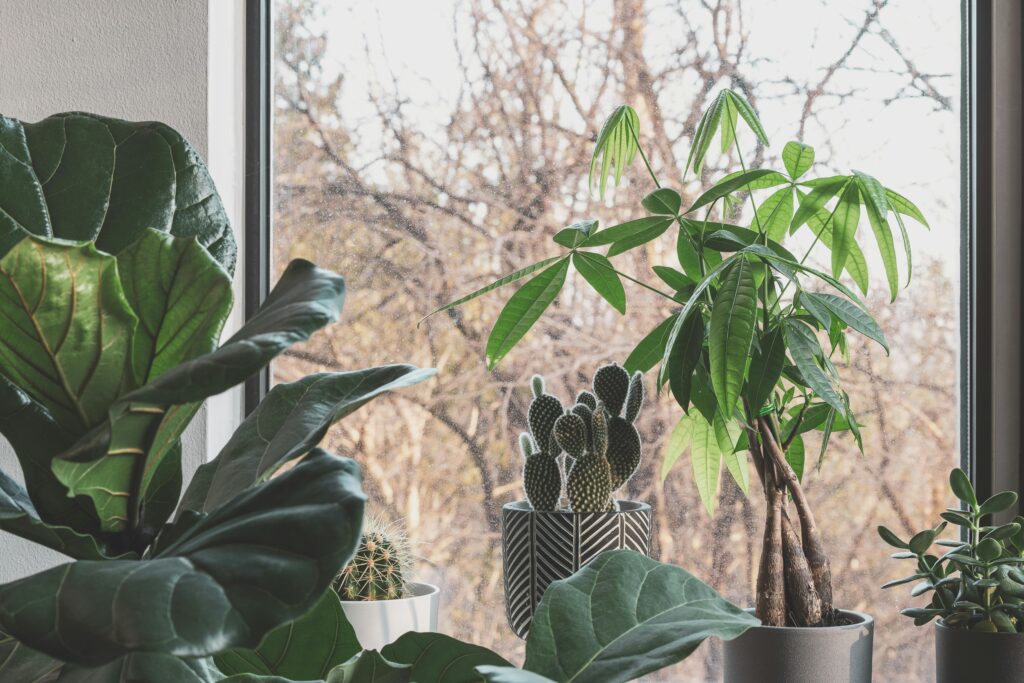
Believe it or not, the type of water you use can have a big impact on the health of your money tree. While tap water is convenient and commonly used in most U.S. households, it often contains chlorine, fluoride, and other chemicals that can build up in the soil over time and stress your plant.
If you want to give your money tree the best care, filtered or distilled water is ideal. These options remove harsh chemicals and minerals that could harm the roots or cause leaf tips to brown. Rainwater is another excellent choice—if you have a clean way to collect and store it, your plant will love the natural nutrients it provides.
That said, if you’re using tap water and your plant seems happy, there’s no need to panic. A simple trick is to fill your watering can and let it sit out overnight. This allows some of the chlorine to evaporate before you use it.
In short, the cleaner and more natural the water, the better your money tree will thrive. It’s a small detail that can make a big difference in keeping your plant lush, green, and growing strong.
Signs of Overwatering in a Money Tree
Overwatering is one of the most common issues plant lovers in the U.S. run into with their money tree, and it can sneak up on you if you’re not careful. While it’s easy to want to “love” your plant with lots of water, too much of a good thing can quickly lead to problems.
One of the first signs of overwatering is yellowing leaves. If your money tree’s lush green leaves start turning yellow or falling off, it might be getting more water than it needs. You might also notice a soft or mushy stem near the base—this is a red flag that root rot could be setting in.
Another thing to watch for is soggy or compacted soil that never seems to dry out. Healthy soil should be slightly moist, not soaking wet days after watering. And if your plant starts to smell musty or sour, it’s likely a sign of rotting roots beneath the surface.
Catching these symptoms early can save your money tree. Just ease up on the watering, let the soil dry out, and make sure the pot has proper drainage. With a little care and attention, your plant can bounce back beautifully.
Signs of Underwatering in a Money Tree
While overwatering is a common issue, underwatering your money tree can also lead to problems—especially in dry U.S. climates or during winter months when indoor air gets extra dry from heating systems. The good news? Your plant will usually give you some clear signals when it’s thirsty.
One of the first signs is drooping or curling leaves. If your money tree’s leaves start to look a little sad, limp, or crispy around the edges, it’s likely not getting enough moisture. You may also notice the soil pulling away from the sides of the pot—a classic sign it’s dried out too much.
In more severe cases, the leaves may turn brown or brittle, especially at the tips. The entire plant can start to look tired and stressed. Thankfully, this is usually easy to fix. A good, thorough watering (making sure excess water drains out) can help revive your plant.
To avoid underwatering, make it a habit to check the soil regularly. If it’s bone dry more than 2 inches deep, it’s time to water. Finding that balance is key to keeping your money tree healthy, happy, and thriving in your home.
How to Revive an Overwatered or Underwatered Money Tree?
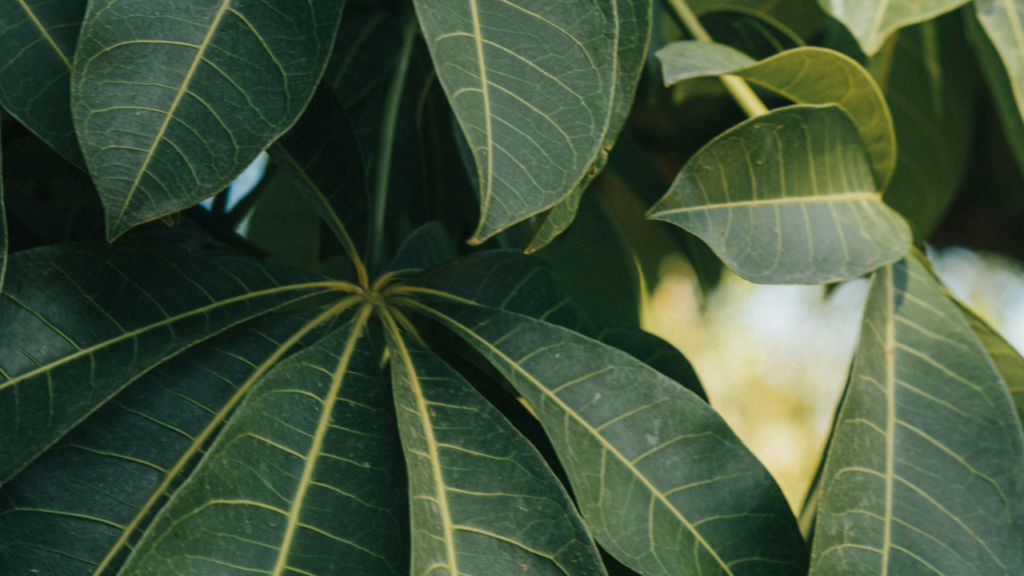
If your money tree is looking worse for wear—whether from too much or too little water—don’t panic. With a little care and patience, you can often bring it back to life. First, figure out which issue you’re dealing with: overwatering or underwatering.
For an overwatered money tree, the key is to act fast. Gently remove the plant from its pot and check the roots. If you spot any that are mushy or black, trim them off with clean scissors. Repot your money tree in fresh, well-draining soil and make sure the container has proper drainage holes. Hold off on watering for a bit and let the soil dry out before starting a better schedule.
If your money tree is underwatered, give it a deep drink. Water thoroughly until it drains from the bottom, and let the soil absorb what it needs. You can also mist the leaves to give the plant a little boost of humidity, especially in dry indoor conditions common in many U.S. homes.
Going forward, keep an eye on soil moisture and aim for a consistent watering routine. With the right adjustments, your money tree should bounce back and thrive once again.
Conclusion
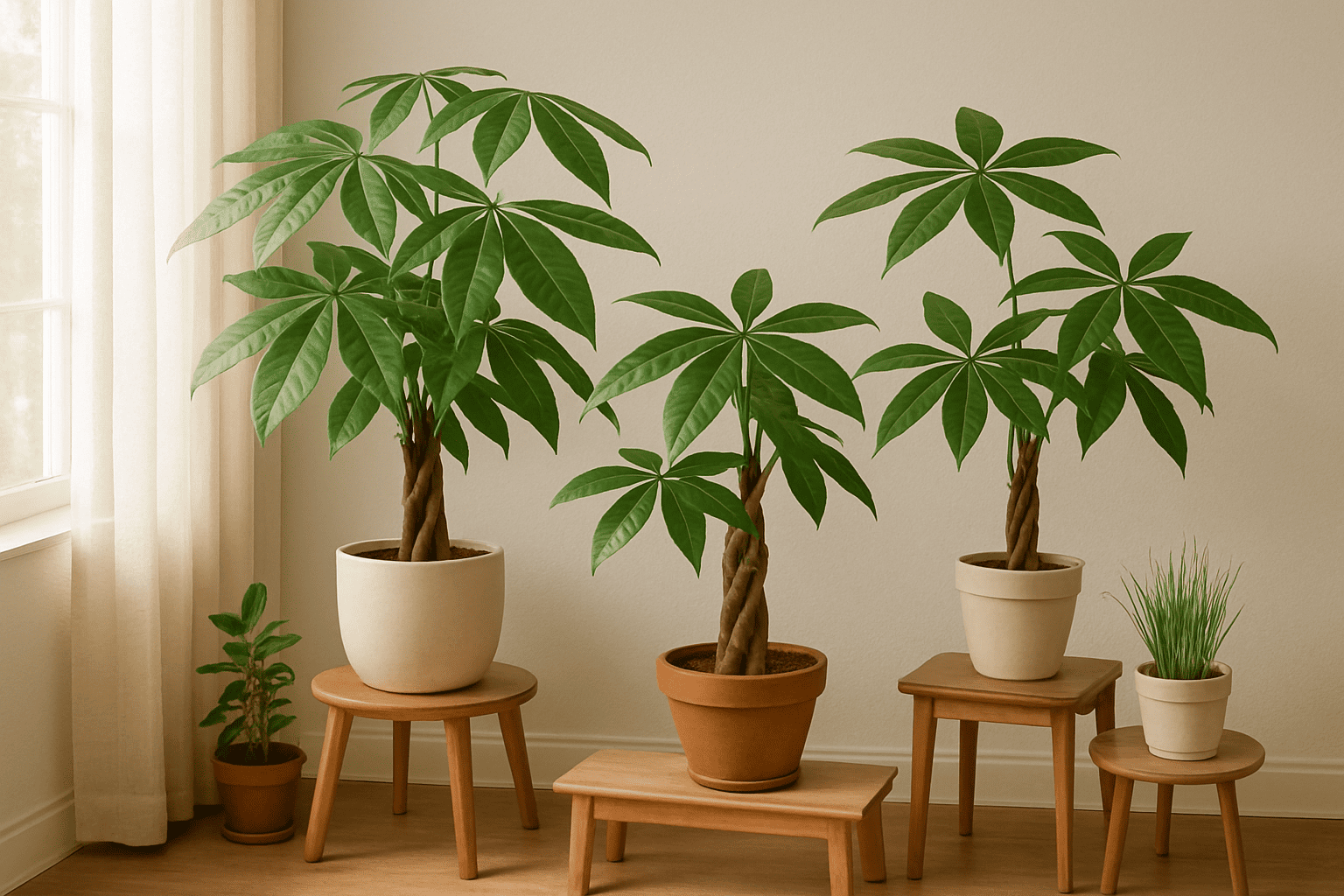
While planting a money tree, you should know the right way to water it. Watering an indoor plant is dependent on several aspects. Still, one of the important ones could be the climate, which also varies from place to place. For example, due to the dry and hot weather of Arizona, we might need to water the money plant frequently, like in 1-2 days. Still, in cold places like Chicago, the water could last for a week.
We can check the humidity of the soil regularly to get an idea of the dryness, We need to adjust the watering schedule as per the season and use mineral-rich water.
If at any time you observe money tree leaves getting yellow, then no need to worry, it can be restored with little care.
With these little tips I shared in this blog, you can water your money tree in the right way and take care of it.
Frequently Asked Questions
In most U.S. homes, watering your money tree every 1 to 2 weeks is usually enough. However, local conditions can make a difference. For example, if you live in a dry climate like Phoenix, Arizona, your plant may need water a bit more often. On the other hand, if you’re in a humid area like Miami, Florida, you might water less frequently. Always check the top 1–2 inches of soil before watering.
The best water for a money tree is filtered, distilled, or even collected rainwater. In many U.S. cities, like Los Angeles or Houston, tap water can be high in chlorine or minerals, which may stress the plant over time. If tap water is your only option, let it sit out overnight to allow some of the chemicals to evaporate.
Signs of an overwatered money tree include yellow leaves, mushy stems, and constantly wet soil. This is especially common in cooler, less sunny regions like Seattle or Portland, where indoor plants may not dry out as quickly. Make sure your pot has good drainage and always check the soil before watering again.
If your money tree has drooping leaves, dry or crispy edges, and soil pulling away from the sides of the pot, it may be underwatered. This often happens in drier, high-altitude locations like Denver, Colorado, or in homes with strong indoor heating during winter. Give your plant a deep, even watering and monitor the soil moisture regularly.
Yes, even a stressed money tree can usually bounce back. In cases of overwatering, trim any rotted roots and repot using well-draining soil. If it’s underwatered, give it a thorough soak and improve your watering routine. Whether you’re in Chicago, Dallas, or anywhere in between, a little plant care can go a long way in helping your money tree recover.
Table of Contents
- How Often to Water Money Tree?
- How to Check If Your Money Tree Needs Water?
- Best Watering Schedule for a Money Tree
- What Type of Water is Best for a Money Tree?
- Signs of Overwatering in a Money Tree
- Signs of Underwatering in a Money Tree
- How to Revive an Overwatered or Underwatered Money Tree?
- Conclusion
- Frequently Asked Questions
